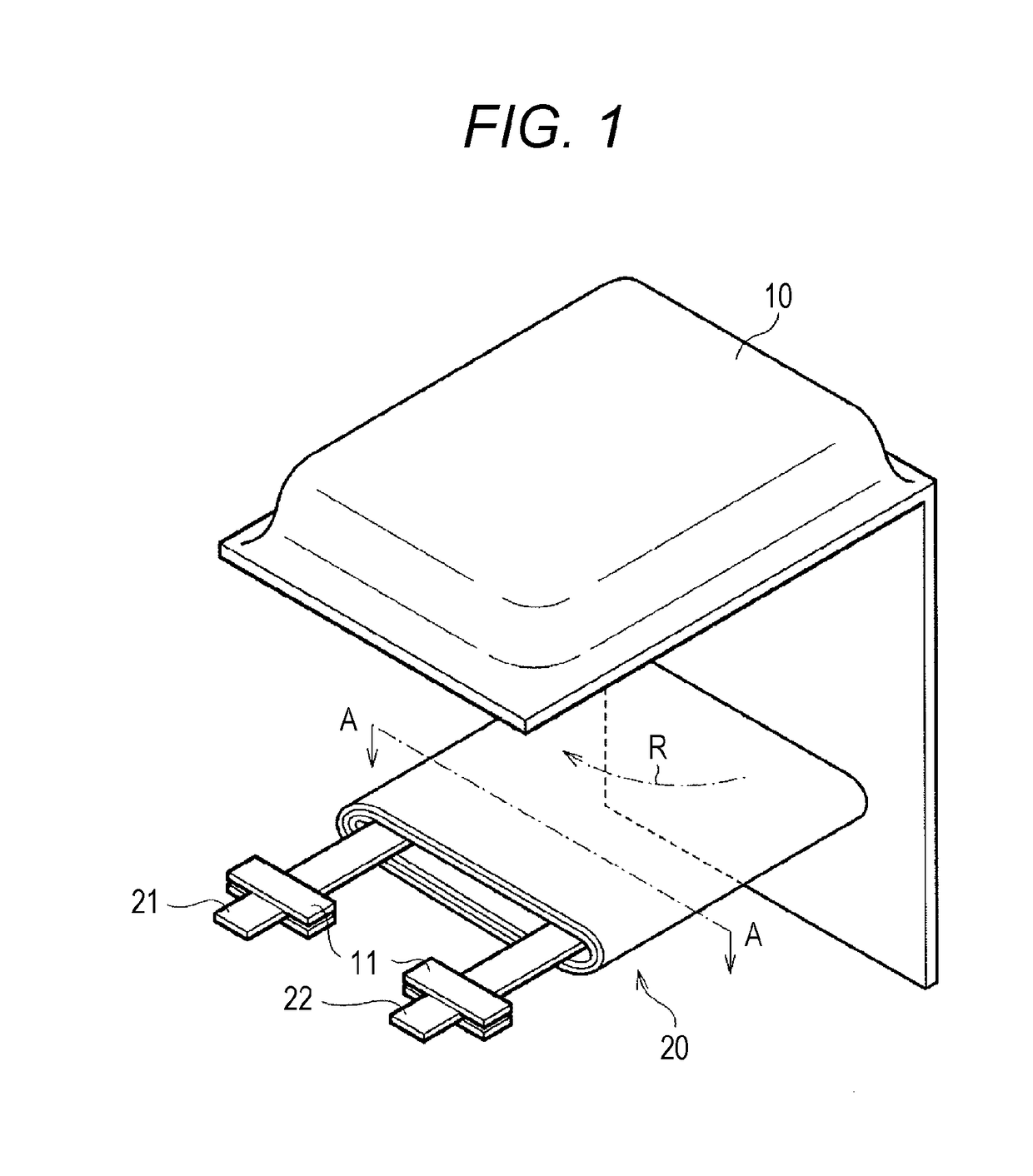Secondary battery charging method, charging control apparatus, and secondary battery
- Summary
- Abstract
- Description
- Claims
- Application Information
AI Technical Summary
Benefits of technology
Problems solved by technology
Method used
Image
Examples
example 2c
, and
[0038]FIGS. 16A and 16B are a graph showing cycle characteristics and a graph showing the cycle transition of a charging time in the secondary battery charging method of Example 2A, Example 2B, Example 2C, Example 1A, and Comparative Example 1A, respectively.
[0039]FIG. 17A is a graph showing a relation between a charge voltage and a charge current with respect to a depth of charge at the first cycle in a secondary battery charging method of Example 2D and Example 2E and FIG. 17B is a graph showing a relation between a charge voltage and a charge current with respect to a depth of charge at the first cycle in a secondary battery charging method of Example 2F.
[0040]FIGS. 18A and 18B are a graph showing cycle characteristics and a graph showing the cycle transition of a charging time in the secondary battery charging method of Example 2D, Example 2E, Example 1A, and Comparative Example 1A, respectively.
[0041]FIGS. 19A and 19B are a graph showing cycle characteristics and a graph s...
example 1
[0079]Example 1 relates to the secondary battery charging method according to the first aspect of the present disclosure and the secondary battery according to the first aspect of the present disclosure.
[0080]A secondary battery of Example 1 or a secondary battery of Example 2 to be described later is configured as a lithium ion secondary battery, and specifically, for example, is configured as a flat laminated film type lithium ion secondary battery, and a positive electrode, a separator, and a negative electrode are spirally wound. A schematic exploded perspective view of the lithium ion secondary battery is illustrated in FIG. 1 and FIG. 2A, and a schematic enlarged cross-sectional view taken along arrow A-A of a spirally wound electrode body (structure) illustrated in FIG. 1 and FIG. 2A (a schematic enlarged cross-sectional view taken along a YZ plane) is illustrated in FIG. 2B. Furthermore, a schematic partial cross-sectional view in which a part of the spirally wound electrode...
example 1b
[0122]Next, in Example 1B, specifically, the first predetermined voltage V0 was set to 4.30 V, and the second predetermined voltage VN was set to 4.35 V. The first predetermined voltage V0 is a voltage when a depth of charge (SOC value) became 67%.
[0123]More specifically, in Example 1B, N was set to five. In addition, the value of ΔVn is positive and negative. More specifically, values of Vn-1, ΔVn, Vn, In, ΔIn, and (In−ΔIn) in each constant voltage charging were set as described in the following Table 4. The charge current at the time of constant current charging was set to 2930 mA.
TABLE 4nVn−1ΔVnVnInΔInIn −ΔIn14.302930488244224.300.014.312442489195334.310.094.40195397697744.40−0.064.3497748948854.340.014.35488341147
[0124]A relation between a charge voltage and a charge current with respect to a depth of charge (SOC value) at the first cycle is shown in FIG. 9A. Further, a relation between a charge voltage and a charge current with respect to a charging time at the first cycle is s...
PUM
 Login to View More
Login to View More Abstract
Description
Claims
Application Information
 Login to View More
Login to View More - R&D
- Intellectual Property
- Life Sciences
- Materials
- Tech Scout
- Unparalleled Data Quality
- Higher Quality Content
- 60% Fewer Hallucinations
Browse by: Latest US Patents, China's latest patents, Technical Efficacy Thesaurus, Application Domain, Technology Topic, Popular Technical Reports.
© 2025 PatSnap. All rights reserved.Legal|Privacy policy|Modern Slavery Act Transparency Statement|Sitemap|About US| Contact US: help@patsnap.com



